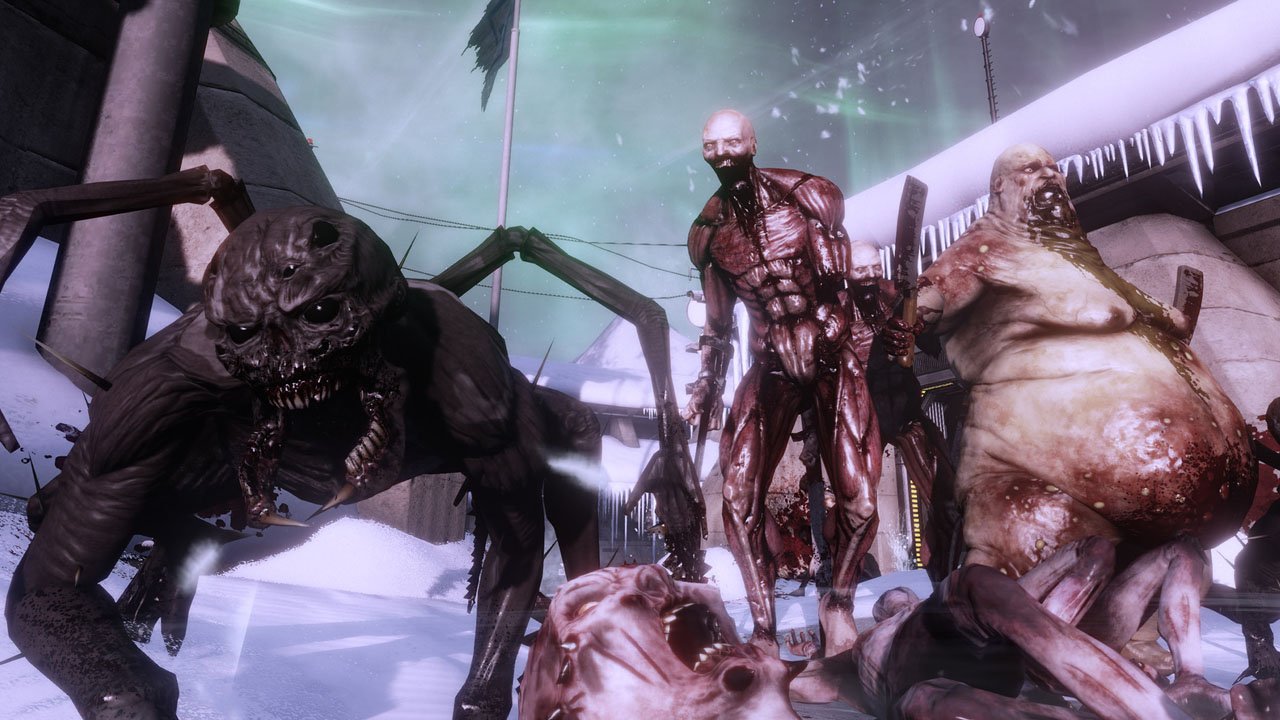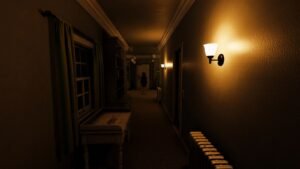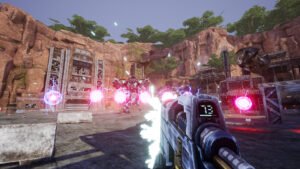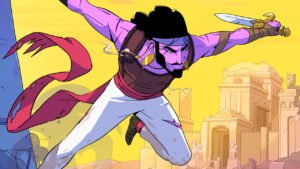
Killing Floor started out as an Unreal Tournament 2004 mod, only being released as a standalone game on Steam several years later. A dedicated community of both perfectionists and map-makers grew up around the co-op first person shooter – and for good reason – there just weren’t many good co-operative games out there. In many ways Killing Floor 2 is a polished remaster of the original game. It’s not trying to do anything new, only enhance what was already a solid and enjoyable core. Like the original, the game involves a team of six players working together to fend off increasingly brutal waves of mutated “specimens”. It’s simple, but also extremely replayable – provided you find the moment to moment experience satisfying.
At the beginning of the game you’ll choose a Perk which will push you into using a particular weapon set. A berserker specialises in melee combat, using shovels and mallets to beat back the relentless tide, whilst the support and commando use shotguns and assault rifles. When it comes to slaughtering specimens, there’s a good few ways to do it. Killing Floor 2 isn’t just shinier than the original, it’s far gorier too. The splatter-house aesthetic is in your face. Floods of viscera cover both the screen and the level. Blood permanently marks walls and floors, reminding you of where things went down. Specimens can also be carved up in a variety of ways. Beyond the satisfying pop of a headshot are far messier occasions where limbs are blown off or only part of a face or abdomen are peeled back.
The splatter and gore alone may well be a selling point for some – the marketing videos seem to think as much – but really it’s an aesthetic element that feeds back into making the gunplay feel meaty as well as hefty and weighted. Killing Floor 2’s gunplay is solid, but the most enjoyable moments are the ones shared between the team. Levels, of which there are currently three, are labyrinthine slaughter boxes where you’re never sure where the specimens are spawning from. Shambling zombie-like mutants wander the corridors whilst black crawlers drop down from vents and Sirens shriek blowing out nearby lights and glass panels.
Blood permanently marks walls and floors, reminding you of where things went down.
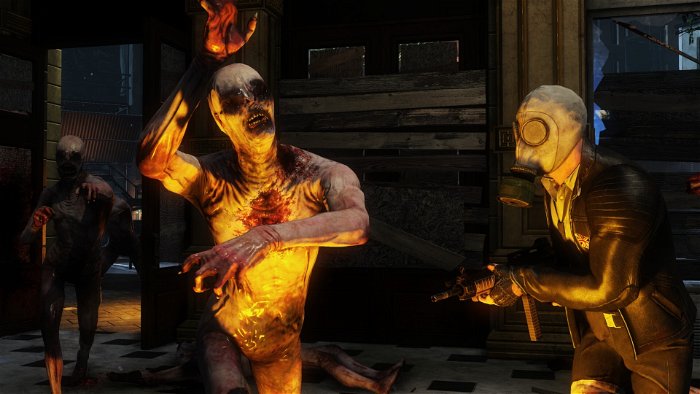
More challenging creatures are amongst the hordes of basic specimens. Each challenges the team in different ways. Grotesque “Bloats” are slow but retch an obscuring corrosive acid, whilst lumbering, hyper aggressive enemies like the Scrake and Fleshpound force everyone to stop what they’re doing (shooting) and focus fire. It’s easy to get overrun, particularly in the later waves. Killing Floor 2’s levels are great. They’re a mix of narrow corridors and more open spaces. The Burning Paris map has huge open areas where you can see the approaching wave, an advantage that sharply contrasts with the smaller in-door apartment spaces where you can funnel enemies through. Enclosed spaces are, on the other hand, terrible for when larger specimens break the door down in a frenzy.
The varied level design leads to varied tactics. There are so many memorable locations in each level where teams can hunker down and cover the entrances. A welding tool allows you to temporarily seal doors, but as mentioned, things can take a turn for the worse when you’re thrown something a particular environment doesn’t deal well with. Defensive tactics tend to disintegrate on “Suicidal” and “Hell on Earth” difficulties, and so you and friends will often be pushed into fighting on the run. These are some of the most intense moments: a panicked team pushing their way through the entirety of the map, desperately scrounging for ammunition, all the while being chased.

Every once in a while a slow-motion sequence will trigger from a headshot or explosion. In these moments you can catch your breath, line up your shots, plan your next move/escape route, or just revel in the gory carnage. Speaking of carnage, at the end of the last wave your team will face off against a boss. There are more boss encounters planned, but the current fight is probably the weakest part of the game. Whilst the boss’ gas grenades and impeccable aim are frustrating, even when things do work out, the general mechanics of the encounter where he becomes enraged and heals to full life several times over is never as exciting as the far more organic final wave.
The combined moments where your team defends an entrenched position, then are overrun and desperately chased are exciting, and remain so through repeated plays. Killing Floor 2 is a shooter with its very own “30 seconds of fun” combat loop. Roughly, each wave is the same. Changes in the environment, wave makeup and team coordination keep things fresh, but these only slightly alter the central thrill of holding off enemies and then fighting through them when things get desperate. Although they may well be micro changes, the different maps, weapons and perks are important to many. Killing Floor 2, currently in Early Access, promises to add more of everything, along with a Software Development Kit to allow modders to do what they do best. The SDK will be the most vital addition, considering the endless amount of life the custom maps and mods gave the original game.
